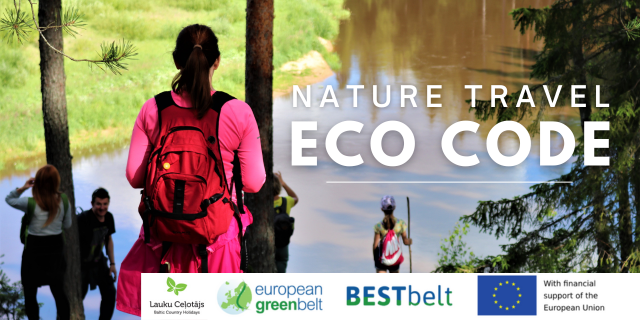How to use GPX files on hikes?
What is a GPX file?
GPX is a type of a file that includes map data, including coordinates in the Global Positioning System (GPS). It can be used to describe stopping points and routes, as well as to preserve height, time and speed. A GPX file in your phone or device will help you make your way in nature.
You will need a device that can open GPX files - a smart phone, smart watch or GPS navigation device.
This presentation shows you how to open GPX files in your telephone. The example uses the "GPX Viewer" application, but there are many others. For example, very good for this purpose is the Latvian State Forests app "LVM GEO", which is free of charge and available for Android and IOS users. The application is based on existing cartographic materials that can be used online or downloaded to use being offline. The application makes it possible to head in both directions - the one that is indicated by the route, or in the opposite direction. Learn more at: www.lvmgeo.lv/en/products/lvm-geo-mobile.
Worth knowing:
- The Baltictrails homepage has GPX files that are in the direction in which the inspection was conducted - from Nida to Tallin for the Baltic Coastal Hiking and from Riga to Tallinn for the Baltic Forest Hiking. If you want to go in the opposite direction, you will have to transform the GPX file. That can be done quickly and easily via free GPX converters that can be found on the Internet. One of them is All trails converter. There you can upload your GPX file, go to "Customize Route", click on "Reverse route" and then click on "Convert file." The new and transformed file will automatically be downloaded, and then you can use it just like any other GPX file.
- Any GPS device (like any electronic measurement system) has a permissible diversion, which is usually mentioned in instructions. The device "contacts" a satellite, and depending on where the satellite is and how tilted it is to the device, there can be a smaller or larger error in terms of the route and the environment. This is also affected by trees in the forest, buildings in the city, as well as terrains. Even if the GPX file is in your phone, each phone will depict it with its own departure and error, depending on how well the signal is received.
- Some maps and cartographic foundations also are not precise and have been created with a "known error." That means that the route on the map will not always coincide with what you see in nature and what is indicated in your GPX file. If, for instance, your GPX file is based on Open Street Maps, then the same file on Google Maps will have a diversion from the planned route.
- In addition to the GPX file, there are track markings in nature which will help you to make your way and to ensure that you are going in the right direction.
- The Baltic Coastal Hiking and the Baltic Forest Hiking are meant for hikers. That is why any other form of transportation can create the impression that the available information resources are not complete.
NOTE: You can learn about GPX files and their use in the blog of nature enthusiast Kristaps Kiziks: www.dodiesdaba.lv/zinas/praktiski-ieteikumi/kas-ir-gpx-un-ka-to-lietot (the blog is in Latvian).











